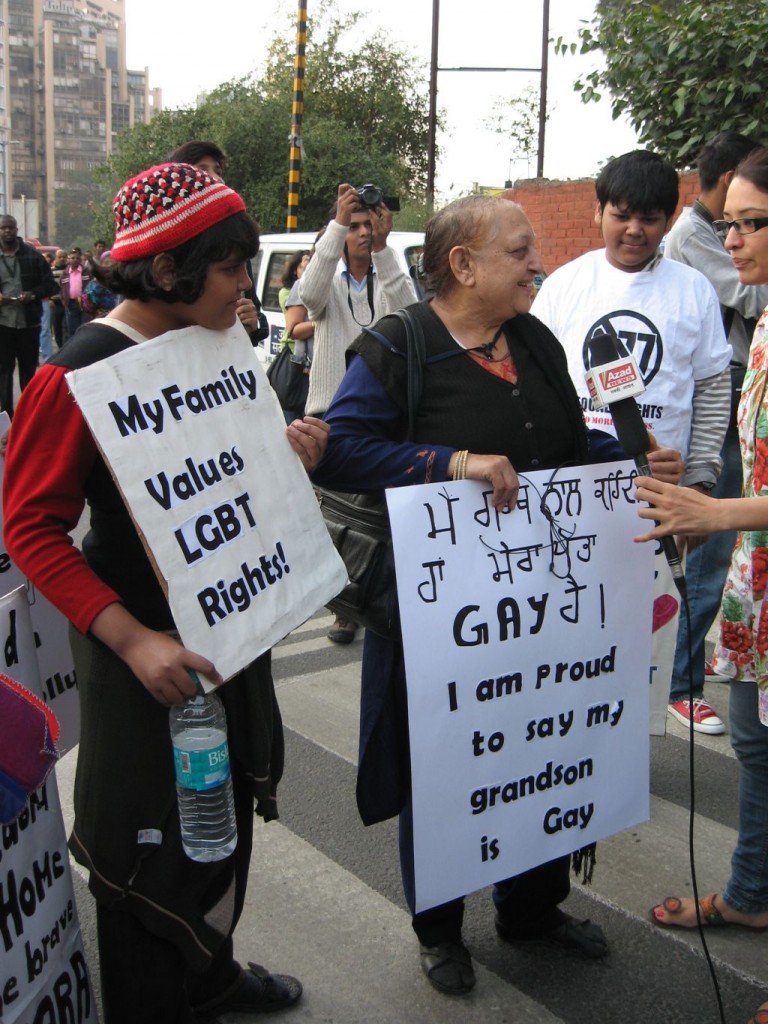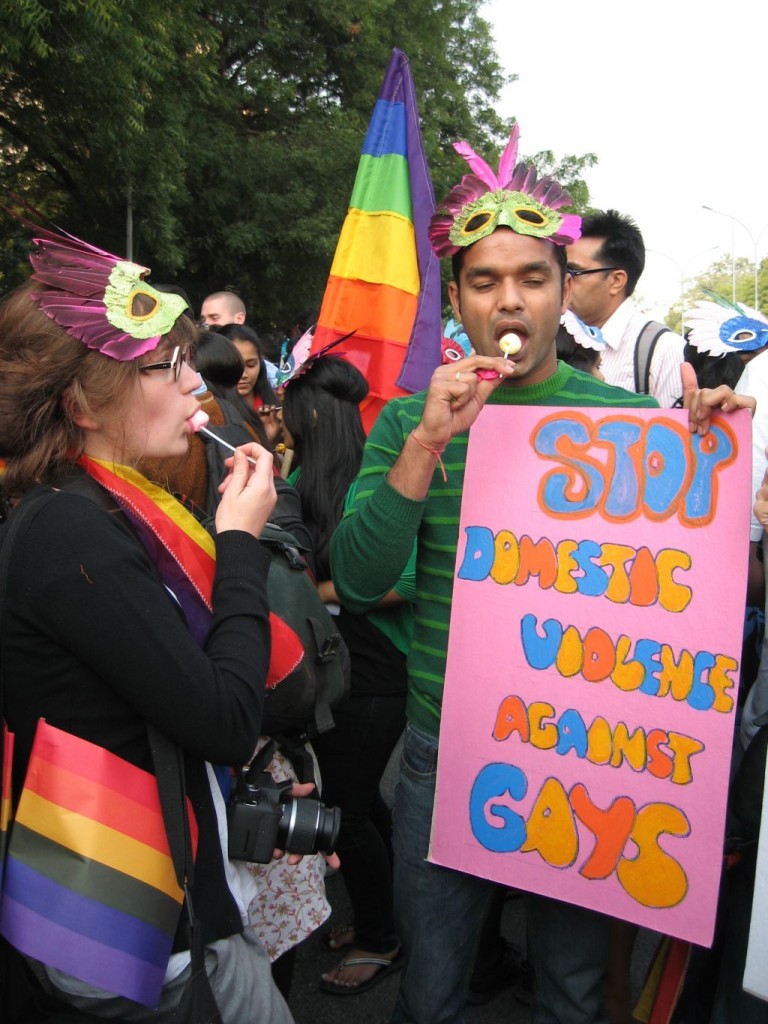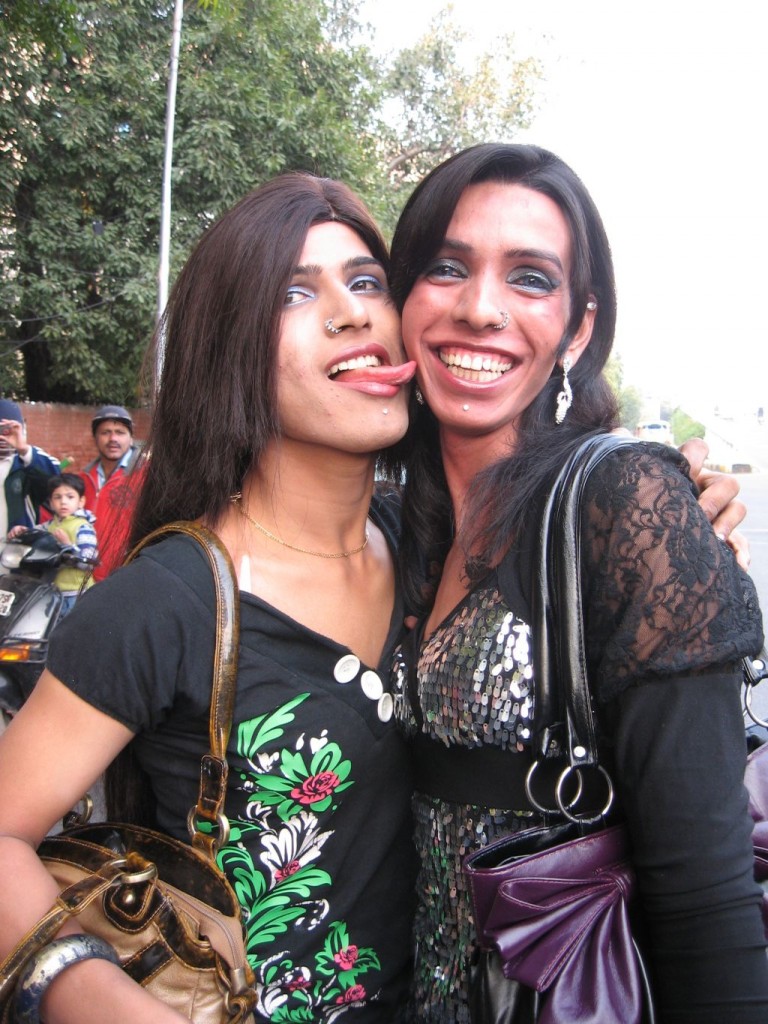Megan and Adam were running late, so I told them to head off while I stayed behind for the party. I wandered around and eventually stopped at a bus stop, where I sat for a while. Two people, who seemed to be from rural areas, came and sat next to me. It appeared that they had also witnessed the parade and were discussing it. One of them was visibly angry about the parade. He was cursing the government and the event organizers, expressing his frustration that people were openly mocking Indian culture and that the government was allowing it.

His remarks suggested he hadn’t explored the historical and cultural aspects of Indian traditions. For instance, the *Ramayana* includes references to hijras with practices similar to those of modern gays, the *Kamasutra* discusses homosexuality, and the temples at Khajuraho feature numerous sculptures depicting same-sex relations. It seemed clear that his views were influenced by a limited understanding of Indian cultural and historical context. I haven’t visited Khajuraho, but I have read the Ramayana and looked at the Kamasutra. From these sources, it seems that India has a very old gay culture, which was accepted in society but became criminalized by the British.

After spending an hour wandering around, I returned to the place where the bus was supposed to start from. There, I met a 20-year-old student from Delhi University. I was sitting near the bus when he came over and sat next to me. He said that attending the parade had made him feel more confident and open. He mentioned that he had been shy before the parade, but the experience had helped him overcome his shyness and embrace his identity with greater assurance. He wanted to talk to me about a problem he was having with his boyfriend.

He said that his boyfriend had stopped communicating with him and had slapped him a few months ago in front of his friends. He was very upset about this and sought my advice. Despite the situation, he mentioned that his boyfriend used to love him a lot, and he found it hard to believe that they could ever break up. He was deeply in love with him. I advised him to wait a while, keep trying to contact his boyfriend, and see how things developed. He seemed quite relieved and happy to hear that he should make an effort to stay in touch.

I asked him if he had told his parents about his boyfriend, and he said no, because he was afraid they would be angry if they found out. I then asked if he would like to marry his boyfriend, and he said that’s what he wanted. When I inquired whether he thought his parents would ever accept him marrying a man, he was silent for a moment and then said no. I also asked if his friends knew about his boyfriend, and he said they did, but only a few were supportive. Most of his friends just made fun of him.

He sought my advice on how to dress to look attractive at the party. He had an extra sleeveless t-shirt that he had bought specifically for the occasion, and he also had a piece of cloth that he wanted to wrap around his waist to enhance his look. Although I’m not a fashion expert, I did my best to help him look his best. As I spoke with him, I wondered what might happen if he were forced into a marriage with a woman. He had no need to marry someone of the opposite sex, and it would be detrimental for both him and his potential bride. Many homosexual individuals in India are coerced into such marriages, which seems like a grave injustice to me.

I also noticed something interesting: many homosexual individuals were calling each other by feminine or humorous names, such as using the word “randi” (slut). I didn’t quite understand why they did this. While hijras often adopt feminine names, homosexuals usually don’t, but it seemed that they enjoyed using these names among themselves. Additionally, I found it notable that homosexuals were making fun of hijras. On the bus ride to the party, there were quite a few hijras on board as well.

Hijras are known for their distinctive clapping and hijra songs. All the hijras on the bus were singing their songs and clapping in their traditional style. However, a group of homosexual individuals being interviewed on the bus continuously mocked the hijras. They would say things like, “Oh my God! Where did these hijras come from, these randis…” At one point, a guy even stood up and loudly asked if anyone had a one-rupee coin to give to the “randi hijras,” so they would stop clapping and singing. Although there was no malice intended, it was clear that they were making fun of the hijras. Despite this, everyone seemed to be in good spirits, and it was a fun ride overall.

I really enjoyed that bus ride and will never forget it. The atmosphere was vibrant—people were laughing, singing, hugging each other, and playfully teasing one another. It was so much fun. Eventually, the bus stopped, and we arrived at M Lounge Bar in Sector 15, Noida. I had expected it to be a place with just some food, drinks, and conversation, but it turned out to be much more than I imagined. In fact, it was a disco. As soon as I stepped in, everything I saw was completely new to me, as I had never been to a disco before.

People were dancing, drinking, hugging, and kissing—I had never seen anything like it before. There was a bar in the disco, and I decided to have a drink, but I didn’t realize how expensive everything would be. While entrance was free for parade participants, the drinks, food, and cigarettes were quite costly. I had a shot of whiskey and a bottle of beer, but I still wanted more because the atmosphere was so thrilling. I was having a fantastic time. Finally, I had to leave the disco to buy some alcohol from a shop. Before I did, I ran into the organizer, Mr. Amit Agrawal, and chatted with him for a while.

He was too drunk to have a meaningful conversation, so he directed me to speak with one of the other organizers, a 25-year-old student. He mentioned that he was also gay. When I asked if he had informed his family, he said, “No.” I inquired whether he thought his parents would approve of him marrying his boyfriend, and he said he wasn’t sure. However, he was certain that he wouldn’t want to marry a girl. He mentioned that they had organized the parade without any financial assistance from NGOs, institutions, or charities. The entire event was funded by a group of gays, who had contributed their own money to make it happen.

He was quite intoxicated and gave me his mobile number, asking me to call him the next day for further discussion. After our conversation, I returned to the disco, where the party was in full swing. Everything I saw there was entirely new to me. I saw many gay couples kissing, hugging, and dancing together. One couple, with a 60+ year-old man and a 20-year-old, stood out—they had the longest kiss I’ve ever seen, lasting for about two hours. There were also hijras with their partners, and I observed them kissing as well. Additionally, a few lesbian couples were present.

It was clear that the regular patrons of the disco were taken aback; they would sit in a corner, watching the scene with shocked and curious expressions. It was evident they had never witnessed anything like this before. I don’t think any of the regular patrons danced that night; they were simply observing what was happening. It was such a fun experience. At first, it felt a bit strange and I was shocked, much like the other regulars, but after a few minutes, everything seemed normal. I felt like everyone was just enjoying themselves, and the most important thing was that they were happy. The sense of freedom and joy was palpable, and it was truly awesome to witness.

It was amusing when one of the guys came up to me, started dancing, and touched my butt. I wasn’t sure how to react at first, but after a few seconds, he left me and joined someone else. I appreciated how he respected my feelings, and I think we should extend the same respect to others. None of the LGBTQ+ individuals made fun of me, insulted me, or tried to disturb me because I was straight. I don’t understand why straight people often make fun of or insult LGBTQ+ individuals. Why can’t straight people respect gay people’s feelings in the same way they expect their own feelings to be respected?

Now that the party was over, I headed back home. I really enjoyed the party—it was an incredibly fun night. Participating in and supporting the parade, along with the exciting party, felt like one of the best things I had ever done for myself. I was scheduled to talk with two members of the organizing committee the next morning, and I was looking forward to it. However, when I called them, both said they had drunk too much the previous night and just wanted to sleep. As a result, I couldn’t speak with them. I will try to talk with them the next time I visit Delhi.

Mr. Amit had asked me to help organize a Gay Pride Parade in Benares as well, but I’m unsure if the city is ready for such an event. Overall, my experience was fantastic, and I genuinely enjoyed participating in the parade. I witnessed the struggles faced by the gay community in India, listened to their concerns, and spoke with many of them. Ultimately, I believe that they deserve equal rights—equal rights in all aspects of life and social acceptance. Although I don’t know how long it will take for them to achieve equal rights in India, it is clear that gaining social acceptance will be a long and challenging process.
The gay community exists everywhere in the world, though it may be hidden in some places due to social pressure and more visible in others due to increased awareness, education, and liberalization. I recently read a newspaper article about an NGO working with the gay community in Varanasi. The article mentioned that the NGO was assisting 1,500 gay individuals in the city. However, I believe this number is an underestimate. The actual number is likely much higher, as many gay people choose not to make their relationships public due to societal non-acceptance.
The gay community exists everywhere in the world, though it may be hidden in some places due to social pressure and more visible in others due to increased awareness, education, and liberalization. I recently read a newspaper article about an NGO working with the gay community in Varanasi. The article mentioned that the NGO was assisting 1,500 gay individuals in the city. However, I believe this number is an underestimate. The actual number is likely much higher, as many gay people choose not to make their relationships public due to societal non-acceptance.

Gay culture is private, and it’s unreasonable to assume we should know or judge what happens behind closed doors. Such thoughts are misguided. Outside of private spaces, everyone—whether homosexual or straight—engages in similar activities. When a person is born in India, they are entitled to basic human rights, including freedom of speech, freedom of thought, and equal rights. Gay culture represents a different perspective, nothing more, and everyone has the right to their own beliefs and ways of living.

Some people prefer relationships with the opposite sex, while others are attracted to the same sex. Just as those who are attracted to the opposite sex deserve to pursue their relationships freely, so too should those who are attracted to the same sex. If we advocate for equal rights, then gay individuals should be afforded the same rights as everyone else on this planet. Imagine being forcibly married to someone of the same sex; it would be an incredibly difficult situation if you were not inclined toward that relationship. The same consideration should be applied to everyone who views homosexuality as abnormal. It’s worth reflecting on.



































